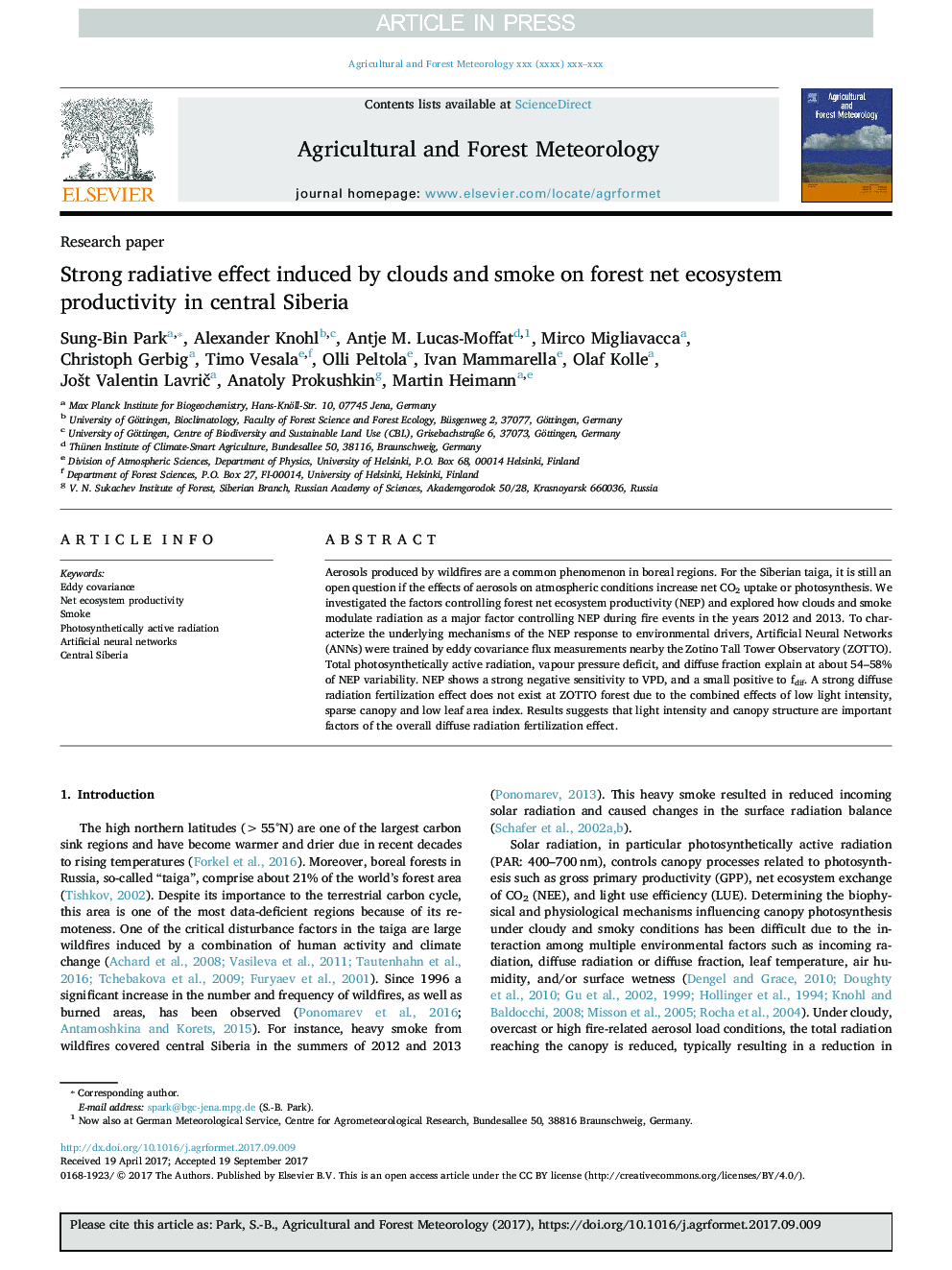| Article ID | Journal | Published Year | Pages | File Type |
|---|---|---|---|---|
| 6536826 | Agricultural and Forest Meteorology | 2018 | 12 Pages |
Abstract
Aerosols produced by wildfires are a common phenomenon in boreal regions. For the Siberian taiga, it is still an open question if the effects of aerosols on atmospheric conditions increase net CO2 uptake or photosynthesis. We investigated the factors controlling forest net ecosystem productivity (NEP) and explored how clouds and smoke modulate radiation as a major factor controlling NEP during fire events in the years 2012 and 2013. To characterize the underlying mechanisms of the NEP response to environmental drivers, Artificial Neural Networks (ANNs) were trained by eddy covariance flux measurements nearby the Zotino Tall Tower Observatory (ZOTTO). Total photosynthetically active radiation, vapour pressure deficit, and diffuse fraction explain at about 54-58% of NEP variability. NEP shows a strong negative sensitivity to VPD, and a small positive to fdif. A strong diffuse radiation fertilization effect does not exist at ZOTTO forest due to the combined effects of low light intensity, sparse canopy and low leaf area index. Results suggests that light intensity and canopy structure are important factors of the overall diffuse radiation fertilization effect.
Keywords
Related Topics
Physical Sciences and Engineering
Earth and Planetary Sciences
Atmospheric Science
Authors
Sung-Bin Park, Alexander Knohl, Antje M. Lucas-Moffat, Mirco Migliavacca, Christoph Gerbig, Timo Vesala, Olli Peltola, Ivan Mammarella, Olaf Kolle, JoÅ¡t Valentin LavriÄ, Anatoly Prokushkin, Martin Heimann,
